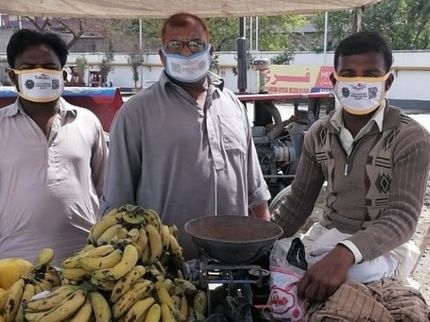Coffee hype in China
Market value of China's out-of-home coffee market in 2018 estimated at 8.4 billion euros
Advertisement
China's out-of-home coffee sector is booming and has experienced great growth, especially in recent years. According to the latest findings of the British market research company Mintel, China's newly discovered love of coffee has boosted its market value to an estimated 64.7 billion yuan (about 8.4 billion euros) in 2018. Compared to the previous year, the sector grew by 7.5 percent.

symbol image
Photo by Jeremy Yap on Unsplash
But even though sales are flourishing, Mintel estimates that the number of coffee house branches decreased by two percent between 2017 and 2018. The reason for this is the dynamism of this industry and the associated fact that such branches are often closed faster than new ones are opened. Compared to the period 2016-17, in which the number of coffee houses recorded a negative growth of -4.4 percent, however, this is a small success. According to Mintel, the Chinese out-of-home market is estimated to comprise approximately 74,000 coffee outlets by 2020.
Belle Wang, Associate Food and Drink Research Analyst at Mintel, explains: "Like many industries across China, the out-of-home coffee market is also subject to the influence of the so-called "new retail", which is driving digital transformation in stationary retail and system catering. The rapid expansion of new Challenger coffeehouse business has boosted coffee consumption in China, which is reflected in growing sales volumes. With the continuing dynamism of new coffee outlets and the increasing number of international and national brands entering the Chinese market, consumers can enjoy more choice in coffee varieties and variants. We estimate that the coffee house industry will continue to record positive growth rates over the next two years. However, due to China's traditional tea culture and the resulting flourishing tea shops, this growth rate will slow down over time."
Chinese consumers prefer coffee from convenience stores
Research by Mintel shows that 52 percent of Chinese consumers buy their coffee in convenience stores, compared to 44 percent who buy the hot drink from a coffee house chain.* However, this does not mean that they consume their drink locally. One in ten strong coffee consumers (10 percent) drinks their coffee in convenience stores and just 5 percent do so in coffee houses.** However, a quarter (23 percent) of consumers who enjoy coffee at least once a month away from home choose a so-called "new retail" coffee branch. In these types of coffee houses, for example, customers can order their coffee in advance with an app and then have it picked up or delivered directly to them.
"Even though this new type of "new retail" coffee outlet is currently experiencing strong growth, its customer loyalty is lagging somewhat behind - partly because this type of coffee outlet is still relatively new. Of course, it is possible to boost their popularity at short notice by aggressive discount campaigns and delivery services. However, for a sustainable business plan, large discount promotions are not the most appropriate solution. Other offers such as a healthy and individually combinable menu can help here," Belle continues.
Milk coffee is the most popular coffee drink in China
According to Mintel research, the most popular coffee drink in the out-of-home market is milk coffee (54 percent), closely followed by cappuccino (52 percent), mocha (45 percent) and Americano (38 percent). Only a good third (36 per cent) like flavoured coffee drinks, and the cold brew coffee hip in Germany only convinces just under a quarter (23 per cent) of Chinese consumers. Plant drinks as a milk alternative? For most Chinese still a relatively new concept. After all, just one-fifth (22 percent) said they were ordering coffee drinks with herbal milk alternatives.
"Milky coffees and cappuccinos are the most popular coffee drinks in the Chinese out-of-home coffee market thanks to their tasty creamy-milky texture. Their wide availability also makes them the perfect introduction to coffee consumption. Once Chinese consumers have learned to appreciate coffee specialties with added milk, they will also dare to approach Cold Brew or Americano. However, a coffee assortment based on the basic varieties makes it more difficult to distinguish oneself on the currently still homogeneous coffee market and attract more consumers. Coffee houses could, for example, be inspired by drinks from the tea house by making their offer more visually appealing and "instagram" appropriate to attract the attention of consumers," concludes Belle.
*Basis: 3000 Chinese Internet users between 20 and 49 years of age who buy and consume their coffee outside their home at least once a month. September 2018
**Consumers who buy and consume coffee outside the home at least once a day.
Note: This article has been translated using a computer system without human intervention. LUMITOS offers these automatic translations to present a wider range of current news. Since this article has been translated with automatic translation, it is possible that it contains errors in vocabulary, syntax or grammar. The original article in German can be found here.































































